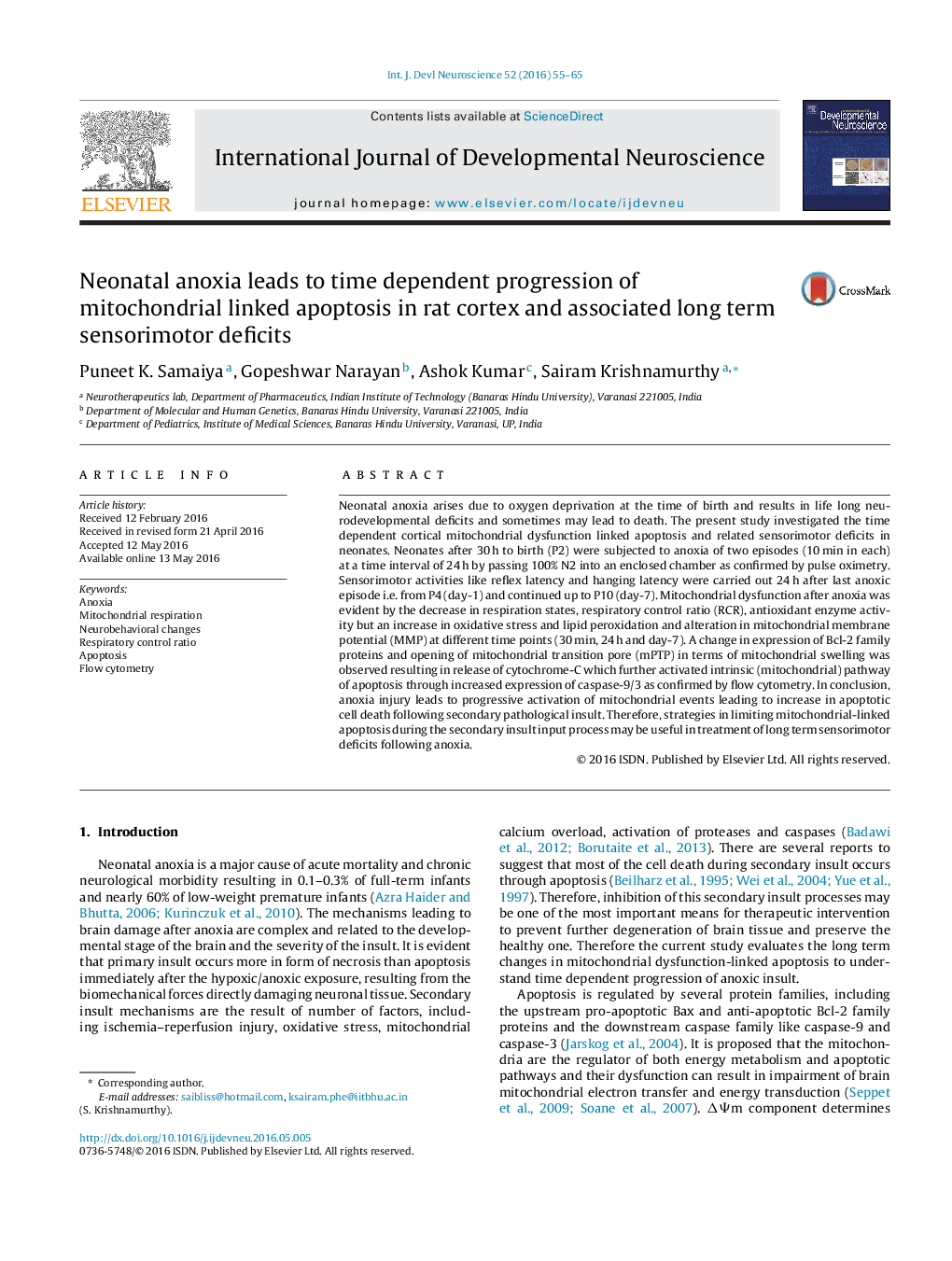| Article ID | Journal | Published Year | Pages | File Type |
|---|---|---|---|---|
| 2785582 | International Journal of Developmental Neuroscience | 2016 | 11 Pages |
•Anoxia leads to decrease in mitochondrial integrity (RCR) and increased oxidative stress.•Anoxia leads to MPT opening and cytochrome-C release up to 7th day.•Anoxia causes pathological changes in Bcl-2 family proteins and caspases expression.•More apoptotic cell death observed in secondary as to primary insult.•Long term sensorimotor deficits were observed.
Neonatal anoxia arises due to oxygen deprivation at the time of birth and results in life long neurodevelopmental deficits and sometimes may lead to death. The present study investigated the time dependent cortical mitochondrial dysfunction linked apoptosis and related sensorimotor deficits in neonates. Neonates after 30 h to birth (P2) were subjected to anoxia of two episodes (10 min in each) at a time interval of 24 h by passing 100% N2 into an enclosed chamber as confirmed by pulse oximetry. Sensorimotor activities like reflex latency and hanging latency were carried out 24 h after last anoxic episode i.e. from P4 (day-1) and continued up to P10 (day-7). Mitochondrial dysfunction after anoxia was evident by the decrease in respiration states, respiratory control ratio (RCR), antioxidant enzyme activity but an increase in oxidative stress and lipid peroxidation and alteration in mitochondrial membrane potential (MMP) at different time points (30 min, 24 h and day-7). A change in expression of Bcl-2 family proteins and opening of mitochondrial transition pore (mPTP) in terms of mitochondrial swelling was observed resulting in release of cytochrome-C which further activated intrinsic (mitochondrial) pathway of apoptosis through increased expression of caspase-9/3 as confirmed by flow cytometry. In conclusion, anoxia injury leads to progressive activation of mitochondrial events leading to increase in apoptotic cell death following secondary pathological insult. Therefore, strategies in limiting mitochondrial-linked apoptosis during the secondary insult input process may be useful in treatment of long term sensorimotor deficits following anoxia.
